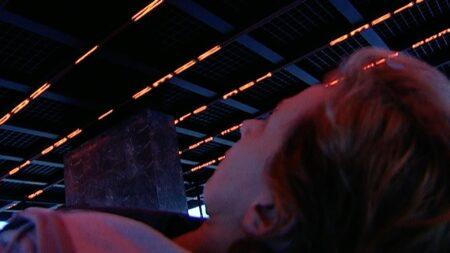Continue playing
(Time remaining: )
Play from beginning
Continue playing "{{ controller.videos[controller.getVideo(controller.currentVideo)].segmentParentTitle}}"
{{controller.videos[controller.getVideo(controller.currentVideo)].title}} has ended.
"Radical Software" 1970-74Beryl Korot
Beryl Korot describes the impetus behind the innovative 1970s publication Radical Software, elucidating the history of video in art and the impact of mass media on society. Emerging from an independent video community that included media visionaries such as Marshall McLuhan and groups such as Televisionaries, Videofreex, People’s Video Theater, and Global Village, the first issue of Radical Software debuted in Spring of 1970 as a publication by the Raindance Corporation.
Beryl Korot and Phyllis Segura (Gershuny) acted as Editors, while Michael Shamburg served as Publisher with Ira Schneider as co-Originator. Early contributors included Nam June Paik, Buckminster Fuller, Ant Farm, Frank Gillette, and Paul Ryan, among others. After eleven issues, Radical Software ceased publication in the Spring of 1974 and is now an invaluable time capsule of an era.
Credits
Producer: Wesley Miller & Nick Ravich. Interview: Wesley Miller. Camera & Sound: Nick Ravich. Editor: Joaquin Perez. Archival Material Courtesy: Beryl Korot & the Daniel Langlois Foundation of Montreal. Special Thanks: Davidson Gigliotti & Ira Schneider.
Closed captionsAvailable in English, German, Romanian, Italian, Japanese, Korean, Chinese, Italian
Through the Art21 Translation Project, multilingual audiences from around the globe can contribute translations, making Art21 films more accessible worldwide.
Interested in showing this film in an exhibition or public screening? To license this video please visit Licensing & Reproduction.
Beryl Korot was born in 1945 in New York City, where she lives and works. She graduated from Queens College in 1967 with a BA in English literature. In her practice, Korot explores how information is encoded and transmitted through systems of lines, grids, and patterns throughout human history. Drawing upon traditions and strategies found in weaving, print media, and video recording, the artist develops artworks that uniquely visualize the intersections of history, language, and technology.
Beryl Korot
Beryl Korot
Beryl Korot
“We had a video theater where people would come on a Friday night, with information they had videotaped at the Woodstock festival or in some community, or whatever, and come and play it for other people. And people would come and sit around these TV sets that were spread out around a loft and look at this new way of getting information. It was amazing.”
Beryl Korot





